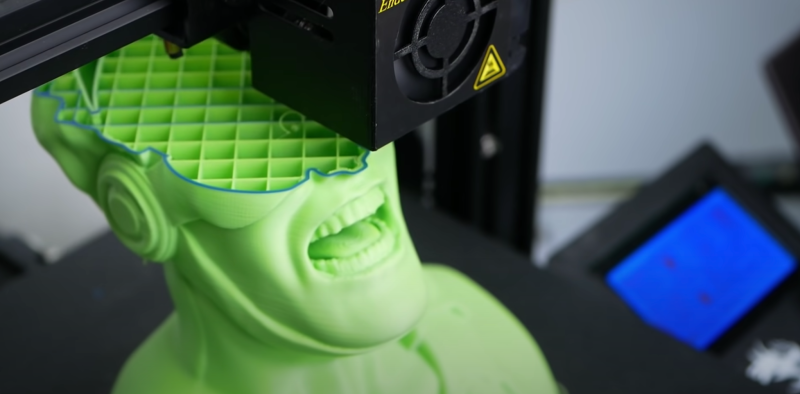It’s a special gut-dropping, grumbly moment that most who use 3d printers know all too well. When you check on your 13-hour print, only to see that it failed printing several hundred layers ago. [Stephan] from [CNC Kitchen] has a few clever tricks to resume failed prints.
It starts when you discover your print has failed and whether the part is still attached to the bed. If it has detached, the best you can do is whip out your calipers to get a reasonably accurate measurement of how much has been printed. Then slice off the already printed section, print the remainder, and glue the two parts together. If your part is attached to your print bed and you haven’t shifted the plate (if it is removable), start by removing any blemishes on the top layer. That will make it smooth and predictable as it’s starting a new print, just on top of an existing one. Measuring the height that has been printed is tricky since you cannot remove it. Calipers of sufficient length can use their depth function, but you might also be able to do a visual inspection if the geometry is unique enough. After you load up your model in a G-Code viewer, go through it layer by layer until you find what matches what has already been printed.
The last (and perhaps most clever) is to use the printer as a makeshift CMM (coordinate measuring machine). You manually step the printer until it touches the top of the part, then read the z-axis height via a screen or M114 command. A quick edit to the raw G-Code gives you a new file that will resume precisely what it was doing before. If you can’t rehome because the head can’t clear the part, [Stephan] walks you through setting the home on your printer manually.
If all the doesn’t work, and the print is still unrecoverable, perhaps you can look into recycling the plastic into new filament.
















These are always easier said than done. I’ve never gotten a print to successfully resume after a problem. Maybe I didn’t try hard enough, maybe it’s not as simple as it sounds.
Ive had success by measuring how much ive printed. Remove that piece then slice the top part to print on the bed. Then glue em together
Honestly, I find the effect of the ‘failure’ of the print shown in the article to be wonderful! The look of shock on his(?) face and the top half of his head being sliced clean off is really cool. But, that infill pattern is terrible. It’s too dense to just be a top layer support and it’s the wrong kind to be strong. That kind of model really asks for an adaptive infill algo like Cura just added.
If your print fails you should really be learning why it failed and how to prevent that from happening again rather than going through all the trouble to try to successfully finish a failed print just so it can happen to you again.
I’ve been wondering for a while, if it might be feasible, on a printer with a BL touch, to add a resume failed print function to the firmware that would use the BL touch to detect where the print stopped and resume from that layer. I do not yet know enough about Marlin firmware to implement such a thing.